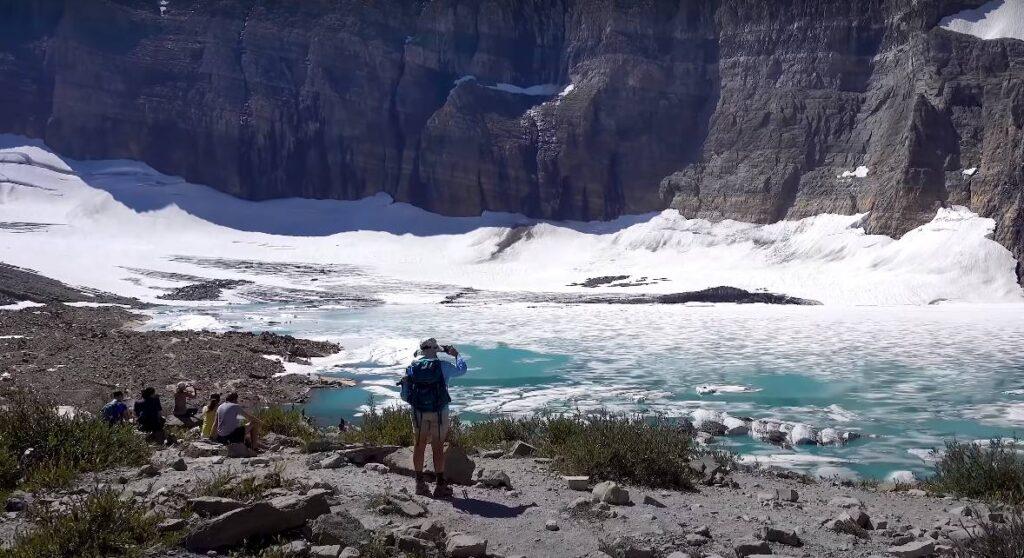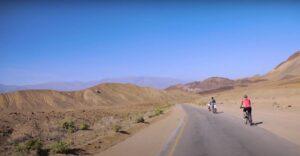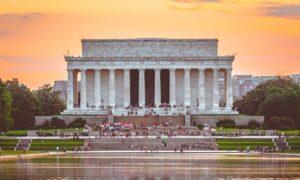Glacier National Park, situated in the rugged Rocky Mountains of Montana, is renowned for its stunning landscapes, pristine lakes, and diverse wildlife. This park is a true gem for nature enthusiasts and adventure seekers alike. Its 1,583 square miles encompass a mesmerizing array of ecosystems, from pristine alpine meadows to ancient forests. With over 700 miles of hiking trails, the iconic Going-to-the-Sun Road, and the shimmering allure of over 130 named lakes, the park offers endless opportunities for exploration, adventure, and reflection.
Planning Your Visit to Glacier National Park
- A. Best Time to Visit and Weather Considerations: The period from June to September marks the prime visiting season. During these months, most trails are snow-free, and the majority of visitor services are operational. However, be prepared for sudden weather changes even in summer, with afternoon thunderstorms and chilly nights.
- B. Park Entrance Fees and Passes: To enter the park, private vehicles are charged $35, and individuals on foot or bicycle pay $20 per person. An excellent option is the annual America the Beautiful Pass at $80, granting access to national parks and federal recreational lands across the United States for a year.
- C. Transportation Options: For air travelers, Glacier Park International Airport is a convenient gateway. Train enthusiasts can opt for the Amtrak Empire Builder route, which delivers passengers to the West Glacier and East Glacier Park stations, both offering easy access to the park.
Opening Hours and Tickets
- A. Park’s Operating Hours: While the park itself remains open 24 hours, certain facilities like visitor centers and ranger stations have set operating hours, usually between 9:00 AM and 5:00 PM. These times can vary seasonally.
- B. Information on Entrance Fees and Passes: Park entrance fees are payable upon arrival at the gate. However, visitors planning to explore multiple national parks might find the America the Beautiful Pass a cost-effective option.
- C. Online Ticket Reservations (if Applicable): While general entrance tickets cannot typically be reserved online, some guided tours or activities may offer online booking options. Check the official park website for any updates on online reservations.
Activities and Things to Do in Glacier National Park
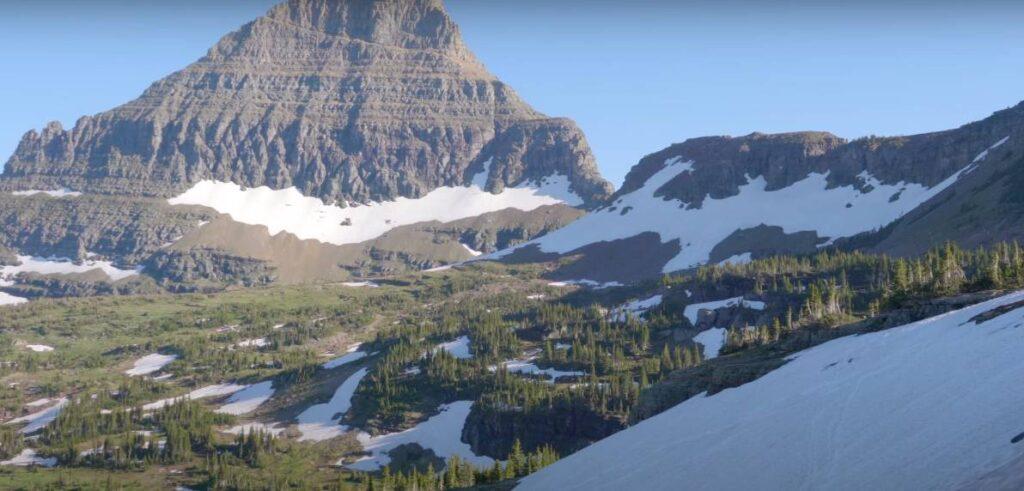
- A. Hiking Trails for Different Skill Levels: Choose the Hidden Lake Trail for an intermediate hike that rewards stunning views of alpine meadows and a glacial lake. For experienced hikers, the Grinnell Glacier Trail offers a challenging trek leading to one of the park’s shrinking glaciers.
- B. Scenic Drives and Viewpoints: Don’t miss the iconic Going-to-the-Sun Road, a 50-mile drive that winds through the park, offering breathtaking vistas and access to numerous trailheads. Logan Pass, a high point along the road, boasts panoramic views of the surrounding mountains.
- C. Wildlife Watching and Photography Opportunities: Set out early to spot wildlife like bighorn sheep and mountain goats along the Logan Pass trails. For your best chance to photograph grizzly bears, explore the Many Glacier Road area.
- D. Water-based Activities (if Available): Rent a canoe at Lake McDonald to peacefully glide across its crystal-clear waters, surrounded by towering peaks and verdant forests.
- E. Interpretive Programs and Ranger-led Activities: Engage with the park’s history and ecology through ranger-led programs. Attend talks at Apgar Nature Center or join guided hikes to delve deeper into the park’s secrets.
Camping in Glacier National Park
Overview of Campgrounds and Camping Options:
Experience the serene embrace of Glacier National Park by immersing yourself in its campgrounds. Choose from a selection of campgrounds, each with its distinct ambiance and amenities.
- Fish Creek Campground, situated on the shore of Lake McDonald, offers a tranquil setting and easy access to water-based activities.
- On the other hand, St. Mary Campground, nestled near the eastern entrance, provides a gateway to the park’s stunning east-side trails and vistas.
Reservation Process and Availability:
While spontaneity can be rewarding, planning is advisable due to the park’s popularity. Reservations can be secured up to six months in advance through the National Recreation Reservation System. Booking ahead ensures you’ll have a spot in the campground of your choice, particularly during peak seasons when demand is high.
Camping Regulations and Guidelines:
As you settle into the rhythm of the wilderness, it’s crucial to adhere to the park’s camping regulations. These guidelines are designed to minimize human impact on the environment and protect both campers and wildlife.
- One key aspect is food storage—utilize the provided bear-resistant storage lockers to prevent attracting bears and other animals to your campsite.
- Remember to pack out all waste and leave the campsite as you found it, ensuring that future generations can experience the same pristine landscapes.
Hiking Adventures
- A. Highlighted Hiking Trails with Descriptions: Embark on an exploration of Glacier National Park’s diverse landscapes through its network of captivating hiking trails. Among these, the Avalanche Lake Trail stands as a favorite. This 4.5-mile round-trip journey leads you through dense cedar and hemlock forests, unveiling a pristine alpine lake framed by towering peaks at its destination.
- B. Safety Tips and Recommendations: Before setting out, acquaint yourself with the trail’s level of difficulty and terrain, ensuring you choose a hike that matches your skill level. Always carry bear spray—a vital tool for potential wildlife encounters—and be vigilant about following park guidelines for hiking in bear country. Consider hiking with a companion to enhance safety and share the experience.
- C. Trail Difficulty Levels and Estimated Times: The Highline Trail, a challenging 11.8-mile trek along the Continental Divide, treats hikers to breathtaking vistas and wildflower-dappled meadows. Meanwhile, the Trail of the Cedars offers a serene 0.7-mile loop suitable for all ages, inviting you to immerse yourself in the ancient forest’s tranquility. As you plan your hikes, remember that factors like elevation gain and trail conditions can influence your pace, so allocate ample time for rest and appreciation of the surroundings.
Nearby Attractions in Glacier National Park
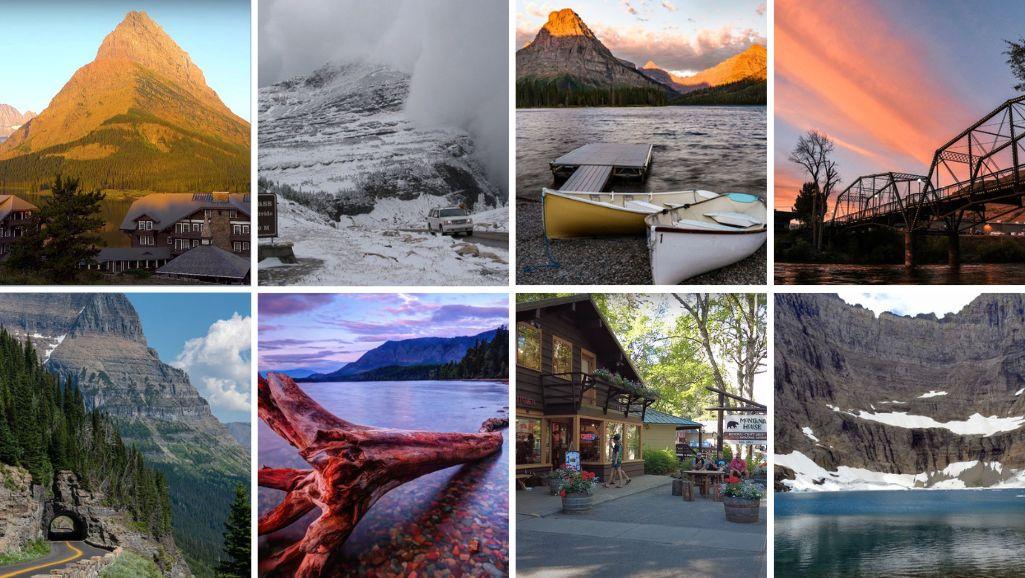
Going-to-the-Sun Road:
This iconic 50-mile-long scenic road is a must-see attraction in Glacier National Park. It traverses through some of the most stunning landscapes, including towering mountains, alpine meadows, and glacial valleys. The road provides access to numerous viewpoints, trailheads, and points of interest, making it a fantastic way to experience the park’s grandeur.
Lake McDonald:
This expansive glacial lake is the largest in the park and is surrounded by dense forests and towering mountains. Visitors can enjoy activities such as kayaking, canoeing, fishing, and simply taking in the serene beauty of the lake. The historic Lake McDonald Lodge is also a popular spot to explore.
Logan Pass:
Situated at an elevation of 6,646 feet (2,026 meters), Logan Pass is a major hub for visitors and a starting point for several hiking trails, including the popular Hidden Lake Trail. The pass offers panoramic views of the surrounding peaks and alpine meadows, as well as opportunities to spot wildlife like mountain goats and bighorn sheep.
Many Glacier:
This area is known for its stunning alpine scenery, with majestic mountains, turquoise lakes, and abundant wildlife.
- Many Glacier Hotel, a historic lodge located on the shores of Swiftcurrent Lake, is a charming place to stay while exploring the area.
- The Grinnell Glacier Trail is a popular hike that starts from Many Glacier and offers incredible views of glaciers and pristine lakes.
Two Medicine:
This quieter and less crowded part of the park features Two Medicine Lake, surrounded by rugged mountains and peaceful landscapes. Boat tours and hiking trails provide visitors with a chance to immerse themselves in the tranquility of nature.
Apgar Village:
Located near the west entrance of the park, Apgar Village offers a visitor center, shops, and restaurants. It’s a convenient starting point for exploring Lake McDonald and the surrounding areas.
St. Mary Visitor Center:
Situated near the east entrance, this visitor center provides information about the park’s history, geology, and ecosystems. It’s also a gateway to the Many Glacier area and the eastern side of the park.
Waterton-Glacier International Peace Park:
Glacier National Park shares its northern border with Waterton Lakes National Park in Canada, creating the world’s first International Peace Park. Visitors can explore both sides of the border and experience the interconnected natural beauty of the two parks.
Nestled within Montana’s Rockies, Glacier National Park beckons with its untamed beauty. This guide has unveiled the essence of a remarkable journey: hike through pristine landscapes, camp under starlit skies, and witness wildlife in their element. From iconic vistas along Going-to-the-Sun Road to serene moments by tranquil lakes, the park offers an unparalleled experience. Let this guide be your compass, leading you through planning and exploration. As you depart, carry the knowledge of Glacier’s allure—the ethereal landscapes, the timeless hikes, and the spirit of adventure. With each step, you’ll create cherished memories and embrace the profound embrace of nature’s grandeur that defines Glacier National Park.
Also, Read: Top 10 Trekking Destinations in the USA
